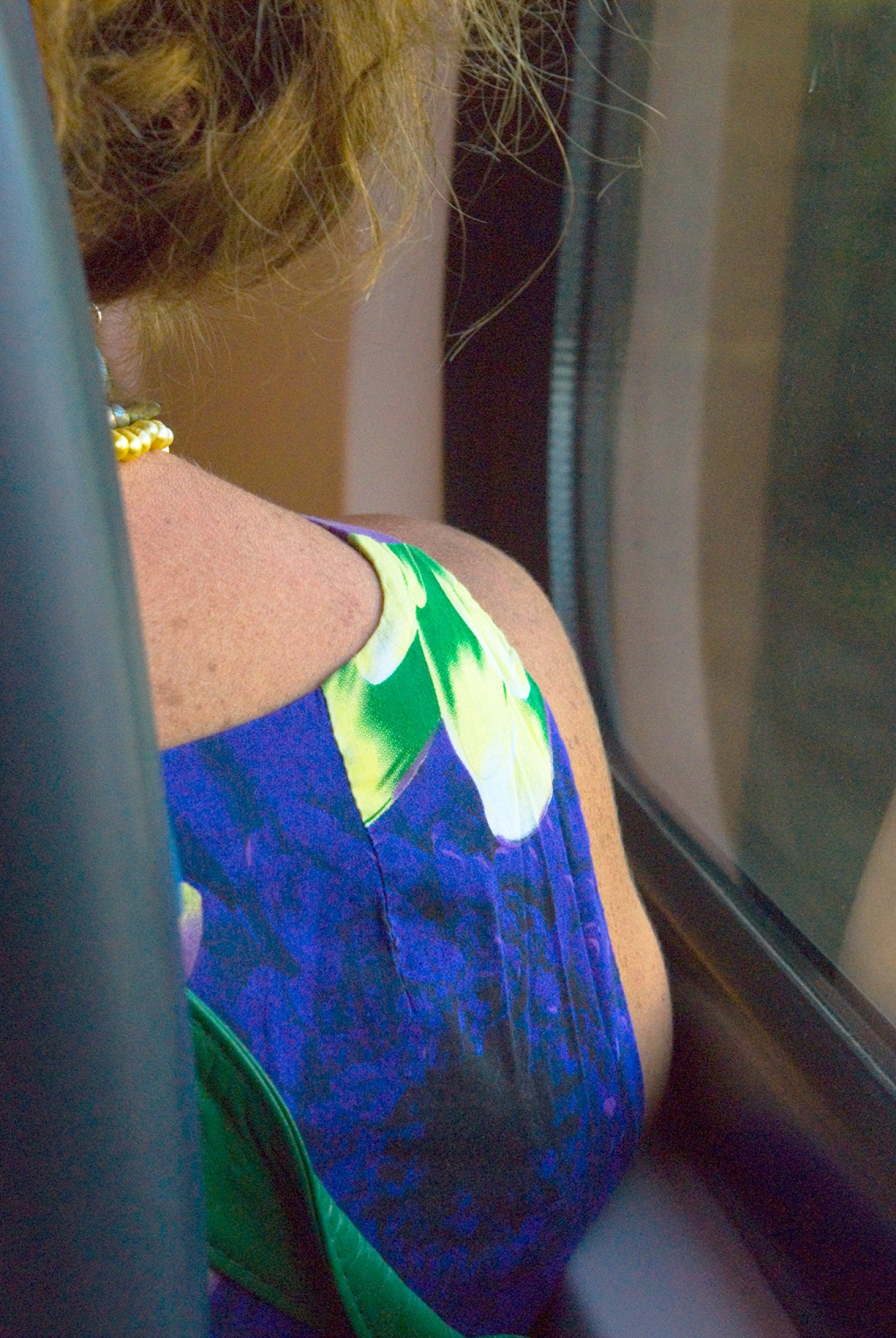Entre deux Mers
In de trein. De vrouw voor me is maar gedeeltelijk zichtbaar. Is voldoende, de rest verzin ik er wel bij. Maar opgaan in details kan natuurlijk tot tunnelvisie leiden. Nou ja.
Ik denk aan Ralph Gibson. Hij kiest details zo perfect, dat de kijker een beeld van het totaal denkt te hebben. Eigenlijk doet hij ons te kort, en vul je dat vanzelf aan. Een oude verkooptruc, de soepfabrikant die de huisvrouw het laatste stapje zelf liet toevoegen, waardoor ze toch kon zeggen dat ze het zelf gemaakt had (Maggi).
Sproetjes, een dubbel halssnoer en het wat slordig opgestoken rossig haar. Zo droegen de dienstmeiden van Breitner het ook. Maar het ging mij eigenlijk om de motieven op haar jurk. Geen ontwerp voor jonge vrouwen, de kleuren zijn te verzadigd en weinig gedetailleerd. Deze vrouw heeft het leven ervaren en ziet het nu wat losser.
Uit ‘The Language of Clothes’ van Alison Lurie: “Observation suggests that practical, down-to-earth women with some experience as gardeners, prefer real plants in their natural colors. Abstract blurs that never grew on land or sea are more apt to appear on the clothes of women who, either because of circumstances or because of inclination, are somewhat out of touch with the natural world.”
In dit fantastische boek heeft ze ook nog wat te zeggen over de gebruikte kleuren: “Psychologically, blue has a calming effect, reducing blood pressure, respiration rate and heartbeat; it has traditionally been associated with harmony, serenity and rest. In the Middle Ages blue was the color of the true lover and faithfull servant, and it retains some of this meaning.” En: “Because it is the color of vegetation, green has ancient and powerful connections with fertility and growth. It is the hue traditionally associated with magic and the supernatural.”
Ik weet genoeg.
Allison Lurie, The Language of Clothes - OWL Books ISBN-13 -0805062441
